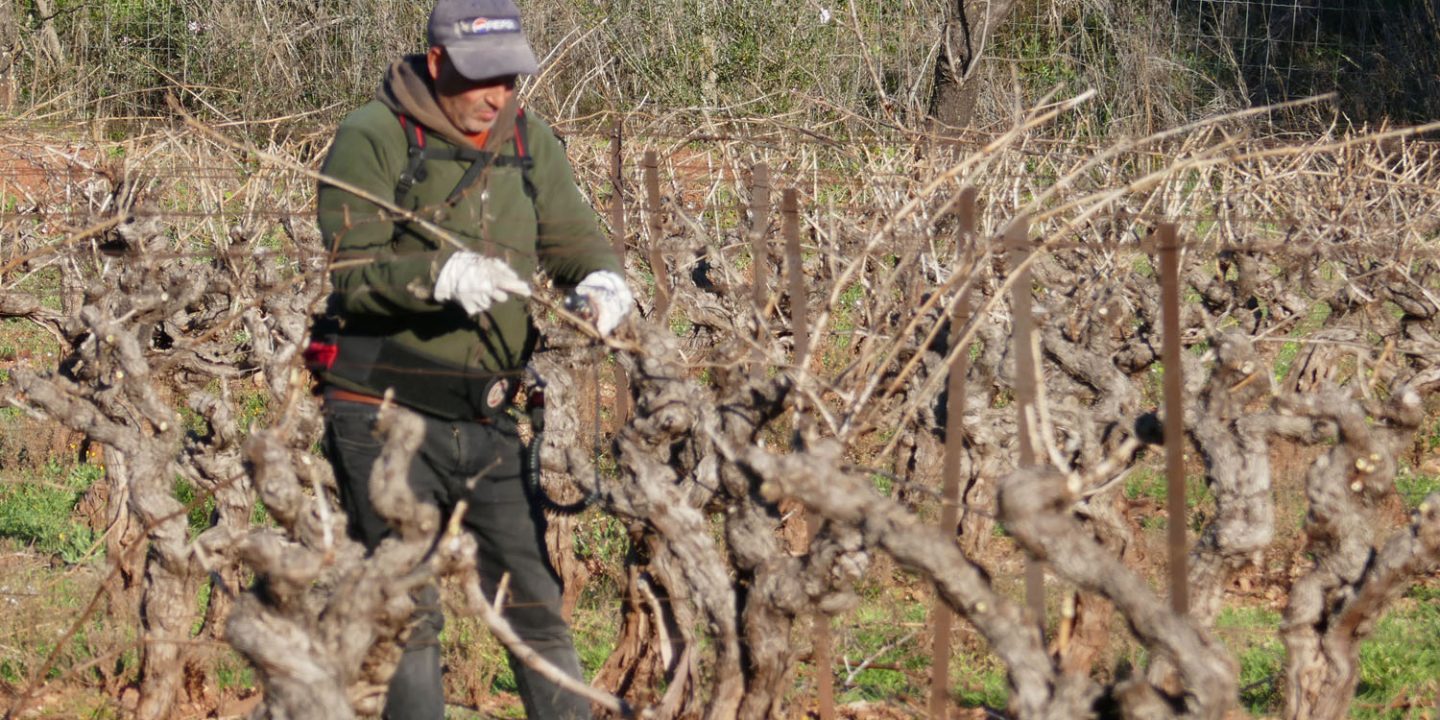When we now travel around among the vineyards in Provence, it is a feverish activity out in the vineyards. The very important pruning of the vine is underway in many places.
Pruning methods. In Provence, there are basically only two pruning methods allowed, Gobelet, a free-growing bush-form that comes from the French word for goblet (Gobelet) and Cordon de Royat, where the double version with “arms in both directions” is the most common.
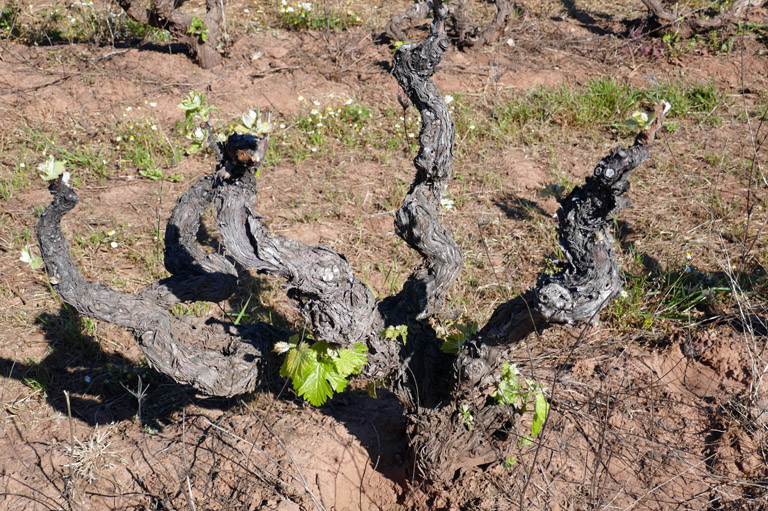
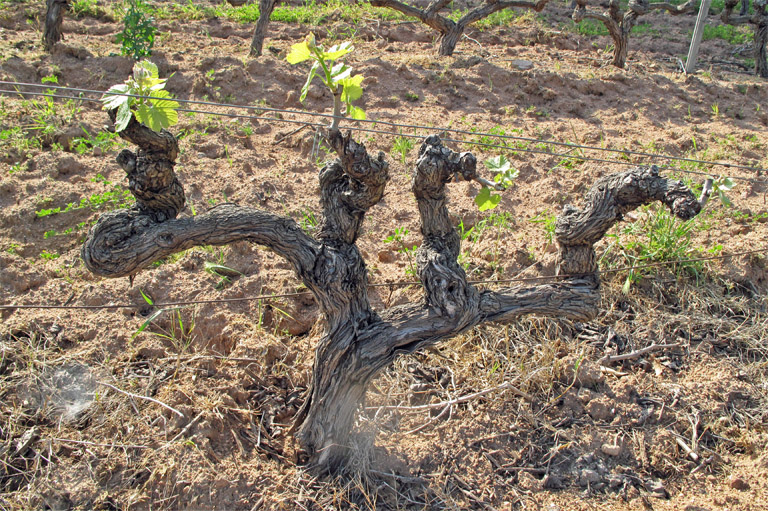
The Gobelet pruning gives a more three-dimensional shape that can protect the bunches of grapes from the scorching sun, which can otherwise give tones of boiled or dried fruit. The Cordon de Royat pruning is more labour-intensive as the shoots later must be tied up on steel wires, but at the same time allows the vines to be harvested mechanically.
When you see the manual grape harvest, it looks quite inconsolable with row after row of grapes to be harvested in a short time, so a large and happy crew is required during the harvest if it is not done mechanically. In the same way, it looks inconsolable during the pruning work, but even here there is a whole crew out doing the pruning.
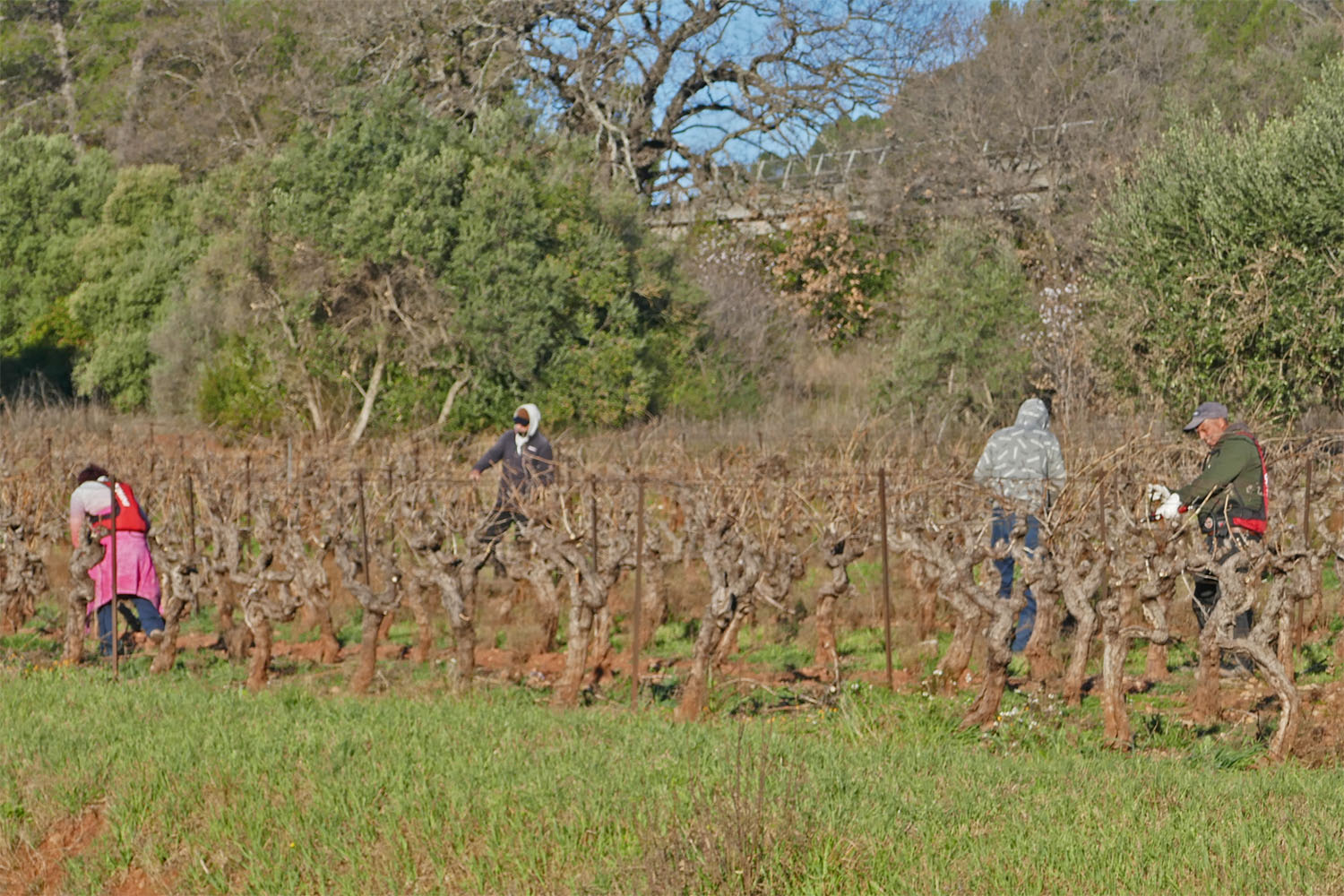
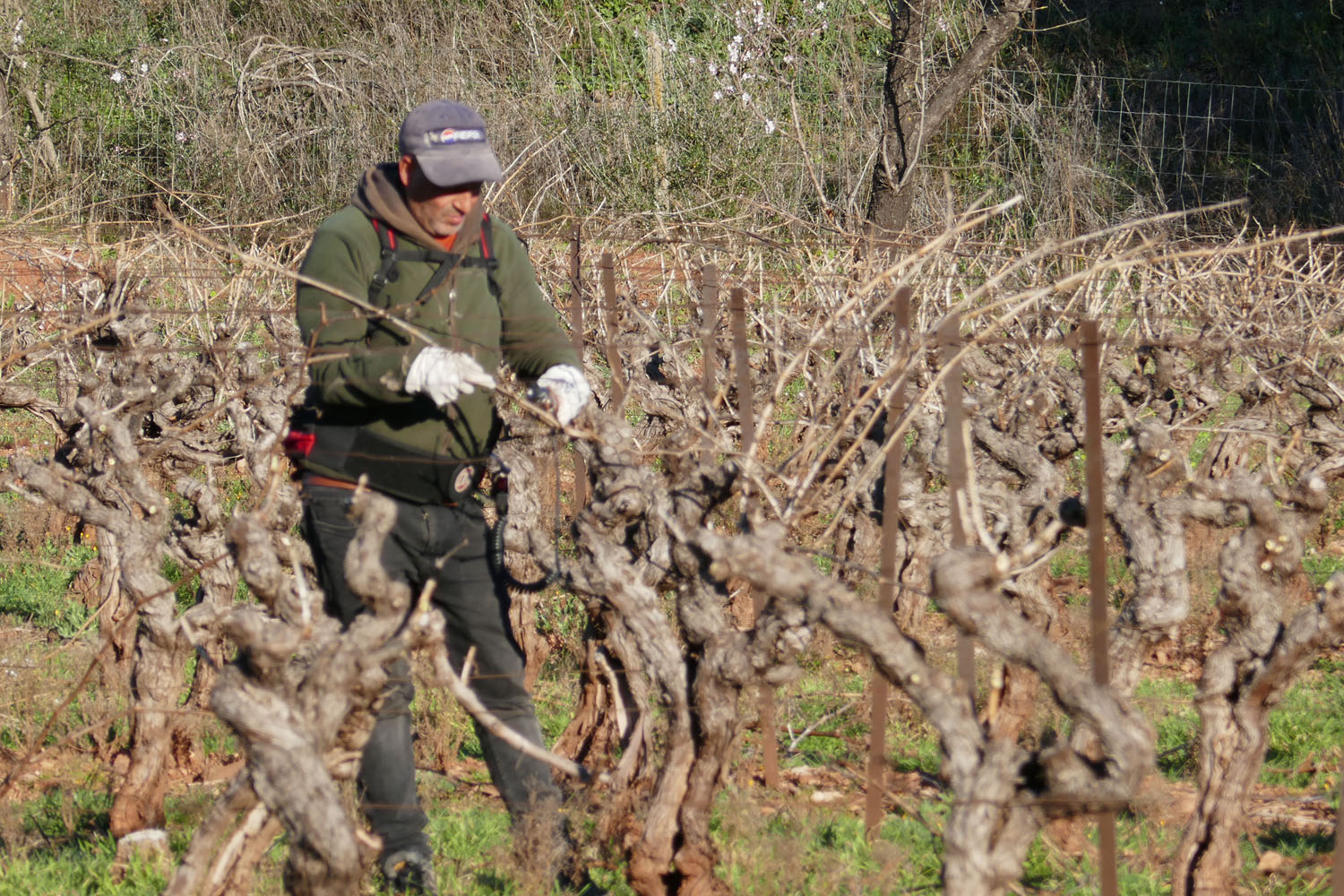
There will be many thousands of pruning cuts per day and person and it is important that it is done correctly, i.e. that the right number of spurs are saved and with the right number of eyes on each spur. How many spurs and eyes there may be is governed by the appellation provisions where special rules apply to vines older than 25 years…. All this in the long run to build up a vine with the right shape and which in the end gives good grape quality.
Fortunately for the staff, there are now battery-powered secateurs! The vineyard in the picture above appears to be a “hybrid pruning”, probably the vineyard was originally pruned like Gobelet but it has been reshaped towards Cordon de Royat to be able to be tied up on steel wires.
During the growing season, the vine looks strong with all its shoots with bunches of grapes, but when the leaves have fallen off, it is reminiscent of a furry dog that comes up from the bath, i.e. a rather slender creature. Also, it is fascinating that the vine can withstand such a hard pruning where virtually 100% of last year’s branches are cut off.
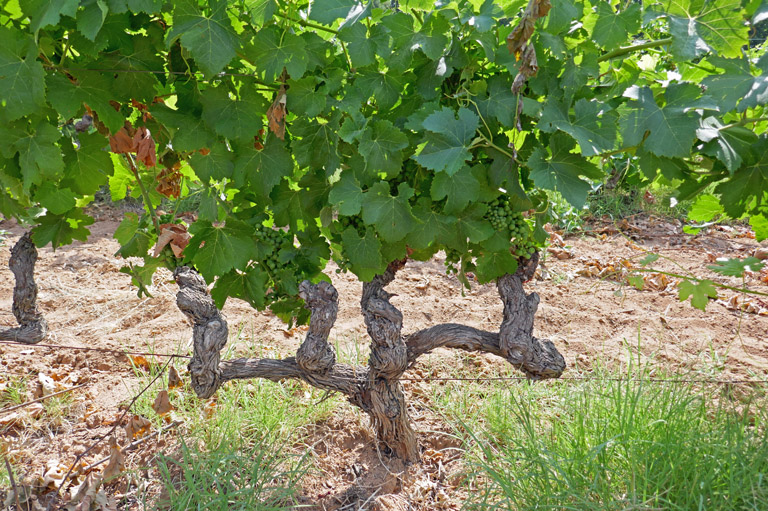
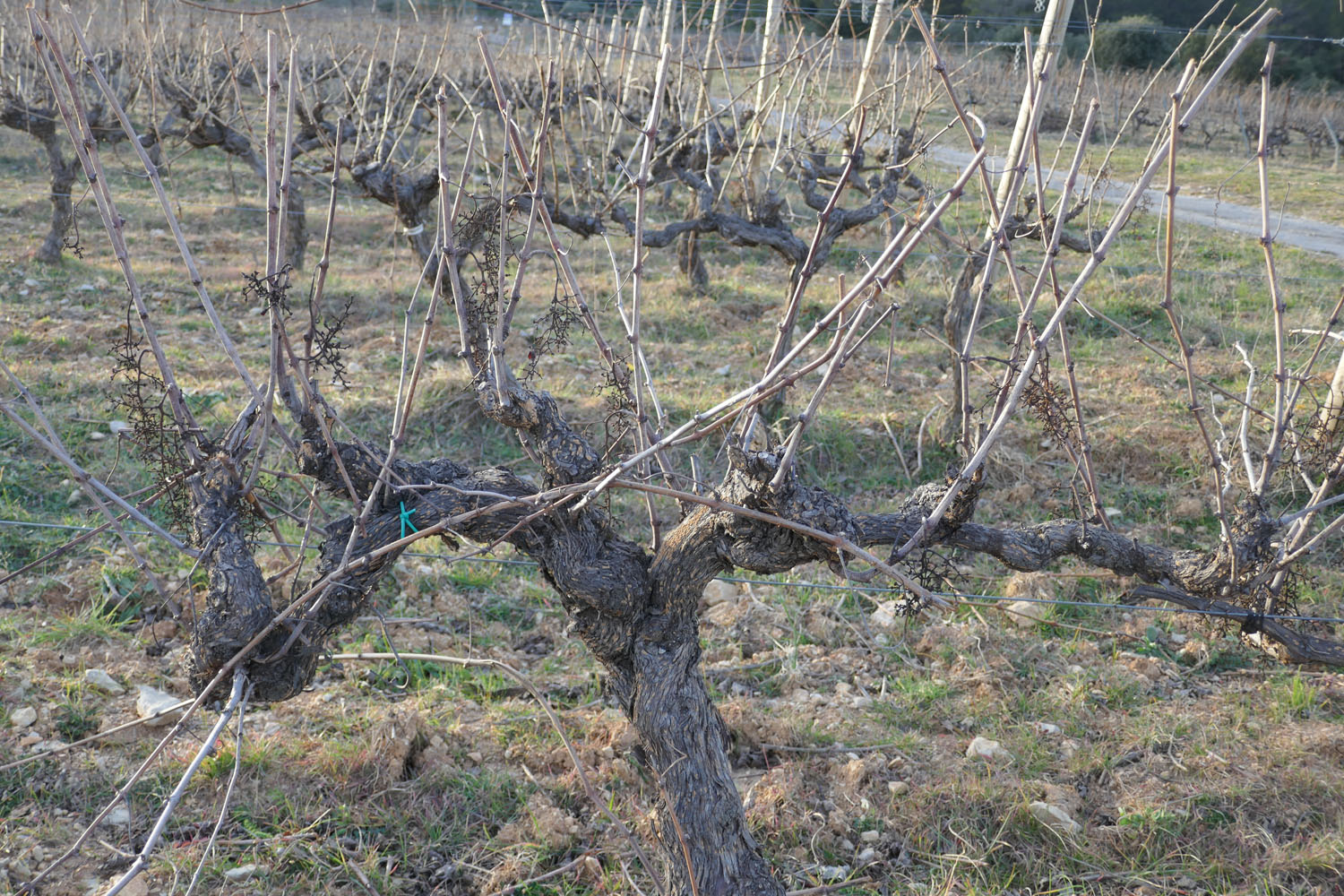
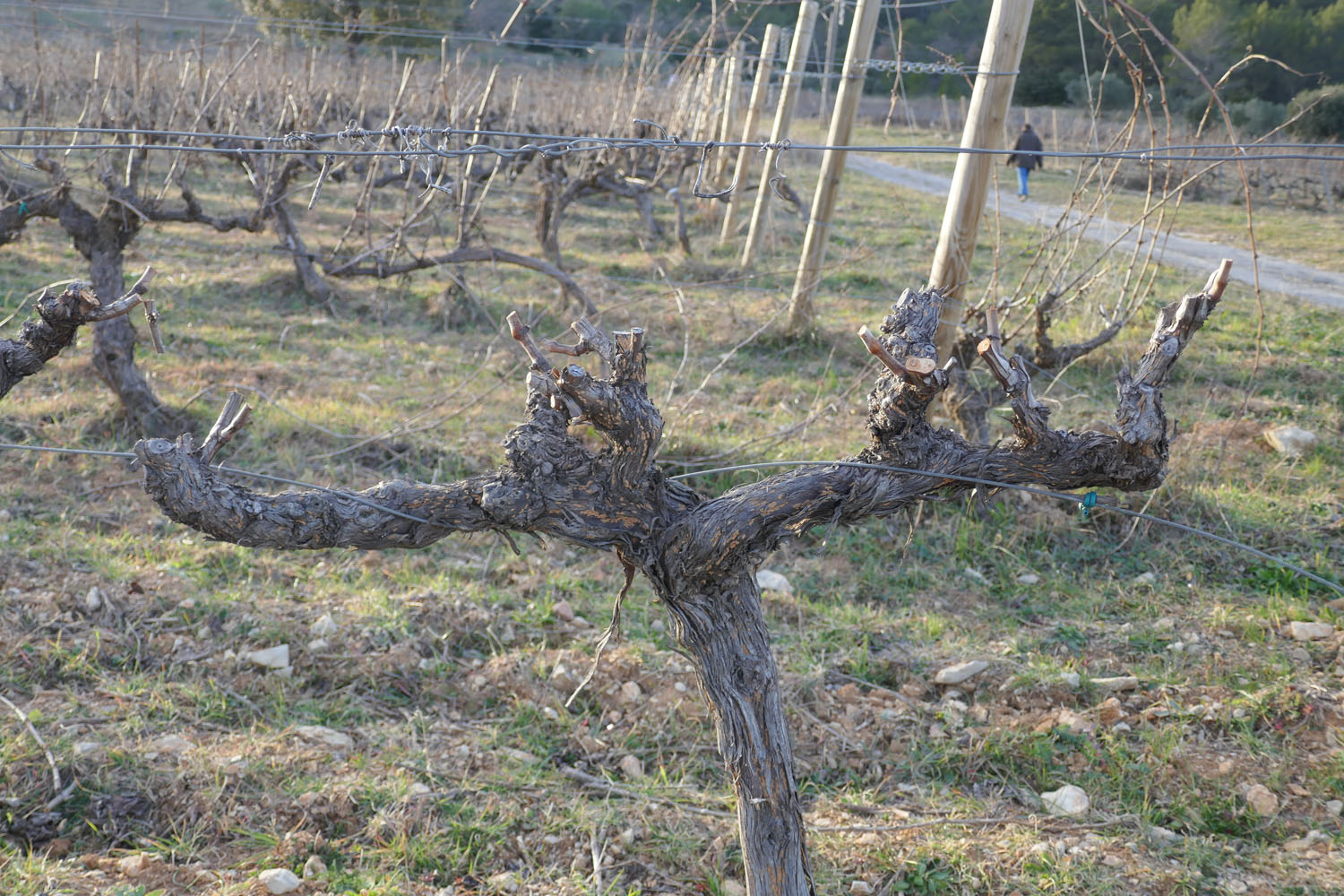
Time of pruning. Personally, I prune our roses in Sweden when the birches have “mouse ears”, there is a balance between not cutting too late so that you cut off the energy in the rising sap and to avoid frost damage. But such old rules have been put out of play with climate change, even for pruning the vines down in warm Provence!
The problem is the greater variations in the weather that have been in recent years. The winter of 2020 was so mild that the uncut vines began to shoot shoots already in mid-January, which makes the vine frost-sensitive and causes energy / sap to be lost during the later pruning. The frost came late in the end of March with temperatures down to -7 ℃ …
But the worst winter in a long time for Europe’s wine and fruit growers was 2021. In Provence, the daytime temperature at the turn of the month March / April was above the average month of May, so the vines thrived and it budded and the shoots picked up speed. But then the night of April 8 came down to -7.4 ℃ which killed many buds. The early flowering Grenache vines were particularly hard hit.
In conversation with Roselyne Gavoty, who leads Domaine Gavoty at Brignoles, known for being one of Provence’s cold holes, she wished she had no Grenache vines! One way to reduce the consequences of late frosts is to prune later, and then especially for the early flowering Grenache.
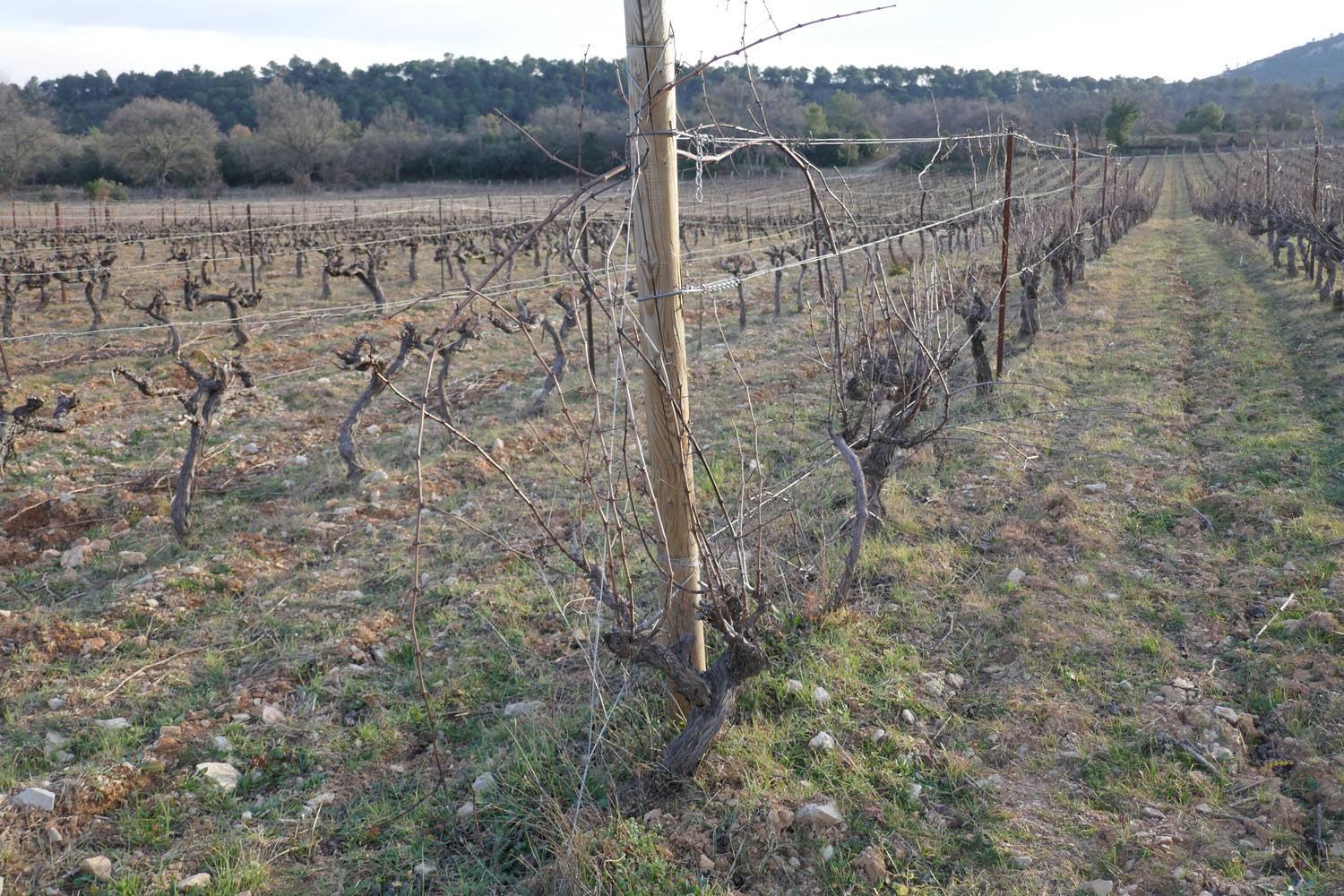
A more labour-intensive method is to save one or two extra eyes/buds at the far end of the spurs. These buds develop faster than the lower-seated buds and if there is a frost, these extra buds will be hit the hardest. The method means that an extra trimming of the vine is needed later, regardless of frost or not, as the shoots from the extra buds are cut off. For the more interested, there is more to read on Lars Torstenson’s blog Vinifierat.se (in Swedish!) where another similar method is described.
Should not be a vinegrower. It was great to be in Provence in the beginning of 2022, the weather was warm and no rain for 50 days, the first rain came only on February 14 and then in the form of a heavy rain. But for the winegrowers this drought was not good, the agronomists therefore recommend that the winegrowers consider winter irrigation to avoid so-called “delayed spring growth” which can reduce this year’s harvest.
As if the drought was not enough, the heat has meant that during the pruning work right now it has been observed that the sap has already started to rise in the vines, something that Roselyne Gavoty was worried about when we visited two weeks ago when the heat was at its “best”. Does not bode well if there will be a heavy frost!
NOTE! Do you sign up for the Newsletter so that you get news from the Provence wine world as well as other interesting wine news?

Göran Boman author of the book “The Wines of Provence – Tricolour“.
